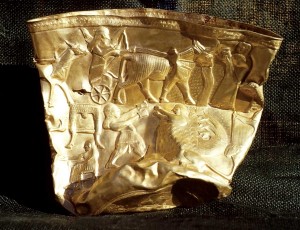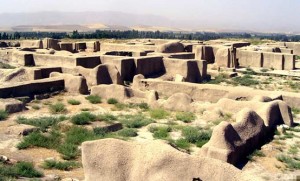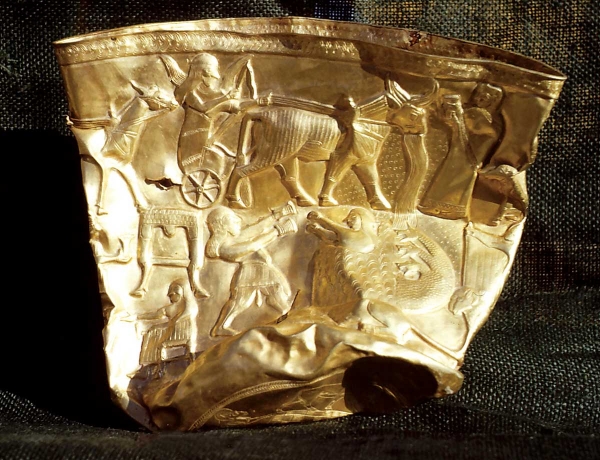 In 1958 archeologist Robert Dyson and his team found this solid gold bowl while excavating an Iron Age citadel at Teppe Hasanlu, near the Solduz valley in north-west Iran. The gold bowl is about 2800 years old. It has been expertly hammered to depict chariots, mythological creatures, and the trappings of wealth.
In 1958 archeologist Robert Dyson and his team found this solid gold bowl while excavating an Iron Age citadel at Teppe Hasanlu, near the Solduz valley in north-west Iran. The gold bowl is about 2800 years old. It has been expertly hammered to depict chariots, mythological creatures, and the trappings of wealth.
 Hasanlu Tepe is the largest site in the Gadar River valley and dominates the small plain known as Solduz. The site consists of a 25m high central “citadel” mound, with massive fortifications and paved streets, surrounded by a low outer town, 8m above the surrounding plain. The entire site, once much larger but reduced in size by local agricultural and building activities, now measures about 600m across, with the citadel having a diameter of about 200 m. The site was inhabited fairly continuously from the 6th millennium BC to the 3rd century AD
Hasanlu Tepe is the largest site in the Gadar River valley and dominates the small plain known as Solduz. The site consists of a 25m high central “citadel” mound, with massive fortifications and paved streets, surrounded by a low outer town, 8m above the surrounding plain. The entire site, once much larger but reduced in size by local agricultural and building activities, now measures about 600m across, with the citadel having a diameter of about 200 m. The site was inhabited fairly continuously from the 6th millennium BC to the 3rd century AD
The gold bowl photo: University of Pennsylvania Museum digital archives
Teppe Hasanlu image: source – Wikipedia
